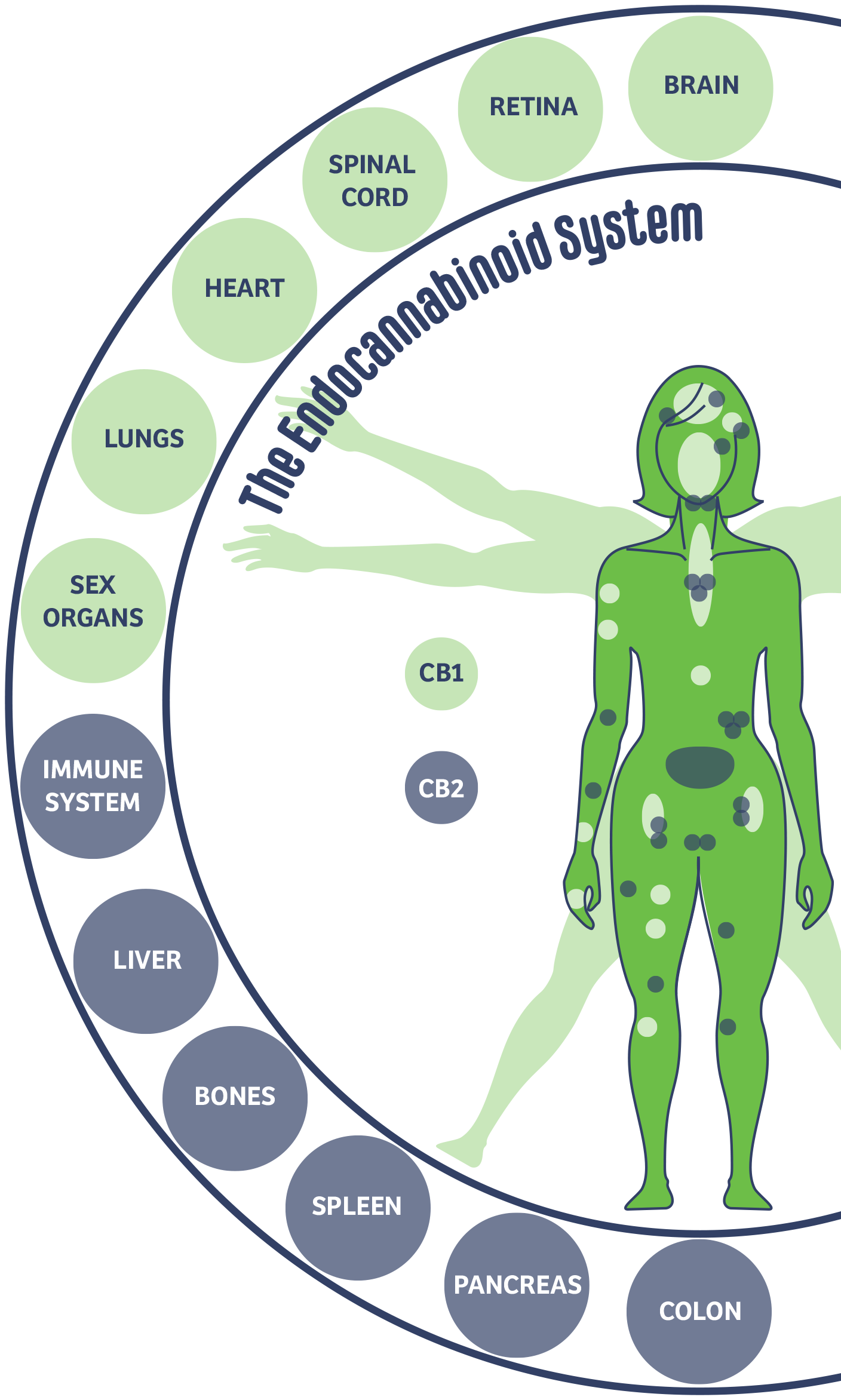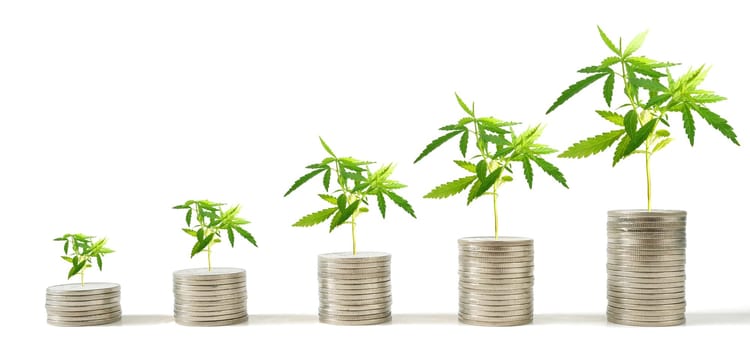PAIN: Is Cannabis in Your Toolkit?

Pain. It’s a four-letter word that reverberates through the lives of so many - whether it’s the persistent ache in your lower back, the relentless pounding of a migraine, or the chronic discomfort that comes with conditions like Ehlers-Danlos or rheumatoid arthritis.
For many, pain becomes an unwelcome companion, dictating how we move, think, and even feel. Yet, amid the search for relief, a conversation is quietly gaining momentum—one that invites us to consider a plant-based ally that has been part of human history for thousands of years: Cannabis.
As more states embrace medical and recreational cannabis, research continues to reveal the plant’s potential in pain management. Cannabis isn’t just another option on the shelf; it could be a central part of your wellness toolkit - especially when integrated with other natural practices.
Having worked with medical cannabis patients for the past five years, I’ve witnessed firsthand the significant improvements patients achieve in their function, sleep, and overall health after integrating cannabis in their wellness regime.
Understanding the ECS: Your Body’s Largest System
Within each of us is a sophisticated system designed to maintain balance and harmony—the Endocannabinoid System (ECS). Often overlooked, the ECS is one of the most crucial systems in the body, regulating everything from pain and mood to appetite and sleep.
When the ECS is functioning well, we experience a sense of balance and well-being. However, when it’s out of sync, pain and discomfort can dominate our lives.
The ECS is composed of three main components
1. Endocannabinoids
Molecules produced by the body that bind to cannabinoid receptors, helping regulate various functions.
2. Cannabinoid Receptors
Located throughout the body, these receptors interact with both endocannabinoids and phytocannabinoids (labeled as cannabinoids like THC or CBD) derived from the plant cannabis.
3. Enzymes
These are responsible for breaking down endocannabinoids after they’ve completed their tasks.
When working smoothly, the ECS helps maintain homeostasis—a state of equilibrium in the body. But factors like stress, diet, or chronic illness can disrupt this system, leading to chronic pain, inflammation, and anxiety.
Activating the ECS: More Than Just Cannabis
While cannabis is known for its ability to activate the ECS, it’s not the only way to support this vital system. Other natural methods can boost endocannabinoid levels, helping you manage pain more effectively.
Exercise: Nature’s Endocannabinoid Booster
Exercise is one of the most effective ways to naturally enhance your ECS. Just 15 minutes of moderate activity can increase levels of anandamide, often called the “bliss molecule.” Anandamide binds to the same ECS receptors as THC, the psychoactive compound in cannabis, providing a natural high and reducing pain.
Incorporating regular, moderate exercise into your routine is a powerful way to support your ECS, break the cycle of pain, and uplift your mood.
Diet and Nutrition
What you eat also plays a crucial role in supporting your ECS. Foods rich in omega-3 fatty acids, like fish and flaxseeds, are essential for producing endocannabinoids. By incorporating these nutrients into your diet, you can help maintain a balanced ECS, reduce inflammation, and alleviate pain.
The Power of Terpenes: Aromatic Allies in Pain Relief
Cannabis is more than just THC and CBD. It also contains terpenes—aromatic compounds that give cannabis its distinctive smell and contribute to its therapeutic effects.
Understanding the role of terpenes can help you fine-tune your approach to pain management.
TERPENES IN FOCUS
Myrcene
Found in mangoes and hops, myrcene has sedative properties, making it ideal for evening relaxation.
Linalool
Commonly found in lavender, linalool is known for its calming effects, helping to ease anxiety and tension.
Beta-caryophyllene
In black pepper and cloves, beta-caryophyllene is unique because it directly interacts with the ECS, offering potent anti-inflammatory benefits. Unlike other terpenes, beta-caryophyllene doesn’t easily cross the blood-brain barrier, meaning it tends to work more on the body than the mind, providing relief without a significant psychoactive effect.
These terpenes work synergistically with cannabinoids to enhance the pain-relieving properties of cannabis, offering a holistic approach to managing discomfort. There are many other terpenes with unique properties to consider as well.
Anandamide: Your Body’s Natural Painkiller
Delving deeper into the ECS, we find anandamide, your body’s natural counterpart to morphine. Anandamide binds to cannabinoid receptors, playing a significant role in managing pain, regulating mood, and even controlling appetite.
Prolonging the Effects of Anandamide
One of the challenges with anandamide is that it’s quickly broken down in the body, limiting its effects. This is where cannabis comes in. By consuming cannabis, you can slow the breakdown of anandamide, extending its pain-relieving benefits and enhancing your overall well-being.
Low ECS Tone and Training Your ECS
Some people suffer from Clinical Endocannabinoid Deficiency (CECD), often referred to as low ECS tone. This underactivity in the ECS can lead to chronic pain, inflammation, anxiety, and other health issues.
Movement and Neuroplasticity
Somatic experiencing and movement exercises are potent tools for enhancing the Endocannabinoid System (ECS) and overall well-being. These practices are designed to release tension, trauma, and pain that are often stored in the body. By tuning into your body’s sensations and allowing it to complete natural responses, you can significantly alleviate pain and improve your sense of well-being.
I’ve witnessed firsthand how the correct dosage of pain medication can ease movement, allowing the body to discover new, more efficient ways to move. This process leverages the theory of neuroplasticity, enabling the brain to rewire itself for better, pain-free movement patterns.
When pain is reduced and combined with mindful movement, education, and postural awareness, patients gain a sense of agency and choice in how they move and live.
Incorporating movement therapies—such as physical exercises, myofascial release, and postural alignment—can stimulate the ECS by promoting the release of endocannabinoids through physical activity and stress reduction. These approaches not only reset your nervous system by releasing trauma and stress but also enhance the production and regulation of endocannabinoids.
When these therapeutic methods are combined with cannabis and mindfulness practices, they create a powerful feedback loop. This helps you become more aware of how your body feels as it relaxes, empowering you to recreate that sense of ease later. The result is a more resilient, responsive body, better equipped to handle the challenges of pain and stress.
Breaking the cycle of pain is not only possible but within reach with a holistic approach. By understanding your body’s ECS and integrating cannabis alongside other natural methods, you can take control of your pain and improve your quality of life. Cannabis is more than just a potential remedy; it’s an invitation to engage with your body in a new, empowered way.
TRAINING YOUR ECS
Using cannabis, especially in low doses, can help “train” your ECS to function more effectively.
INCREASED RECEPTOR DENSITY
Consuming cannabis, particularly THC, binds to CB1 receptors in the brain. Over time, this can lead to increased receptor density, making the ECS more responsive and efficient.
MICRODOSING
Starting with small doses of cannabis can gently stimulate your ECS without overwhelming it, allowing your body to adapt and find balance.
CONSISTENT USE
Regular, consistent cannabis use helps maintain a steady state of cannabinoid activity in your body, supporting the ECS’s role in maintaining homeostasis.
Complementary practices, such as regular exercise, a diet rich in omega-3 fatty acids, stress management techniques, and adequate sleep can further enhance ECS function.
Practical Steps:
BREAK the PAIN CYCLE
Incorporating cannabis into your pain management routine doesn’t have to be complicated. Here are some practical steps to get started:
Start Small:
If you’re new to cannabis, begin with a low dose and gradually increase it until you find what works best for you. Microdosing can be an effective way to manage pain without overwhelming your system.
Choose the Right Strain (Cultivar or Chemovar):
Different strains of cannabis have different effects. Look for strains high in CBD for anti-inflammatory benefits or those rich in specific terpenes that align with your needs.
Explore Different Methods:
Cannabis can be consumed in various forms, from oils and tinctures to edibles and topicals. Experiment to find the method that best suits your lifestyle and pain levels.
Consult a Professional:
If possible, consult with a healthcare provider who specializes in cannabis medicine. They can offer personalized advice and help you develop a comprehensive pain management plan. Look for a professional who can help you integrate cannabis with your current exercise and nutrition program, as well as be mindful of any contraindications or potential drug-drug interactions if you are currently taking prescription medications.



